Mount Fuji is one of Japan’s most famous sights, and everyone wants to catch a glimpse of it. It’s one of Japan’s Three Holy Mountains and, at 12,388 feet, the highest peak in the country. It’s designated as a Special Place of Scenic Beauty, one of Japan’s Historic Sites, and a UNESCO World Heritage site. And while this extraordinary mountain is an active stratovolcano, fortunately, the last eruption was in the 1700s.
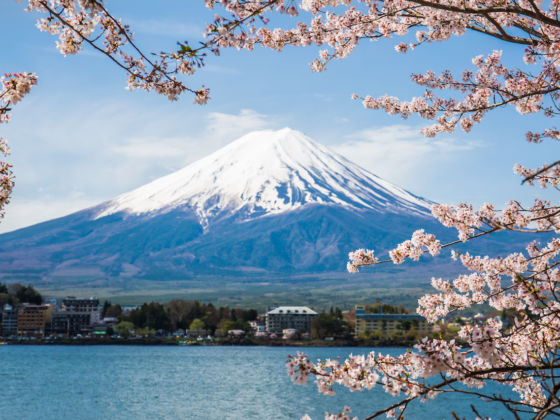
Where to Find the Most Epic Views of Mount Fuji
Hiking the revered natural wonder is one way to see it, but the best way to get that iconic view is from afar — though it’s hard to know exactly where to get that perfect shot. On a recent trip to Japan, I visited Yamanakako Hanano Miyako Park hoping to get a view of Fuji behind a field of flowers. When we arrived, we could see only its snow-capped peak, and minutes later, clouds covered Fuji entirely. People put away their cameras only to see the mountain reappear 15 minutes later. We clamored for our devices, and the clouds returned. The exhausting cycle continued.
In the end, we took a bus to a different spot where we got a clear, wonderful view of the mountain. To avoid the same frustration we faced and cut straight to the good stuff, here are the best places to see the most epic views of Mount Fuji.
Lake Kawaguchiko
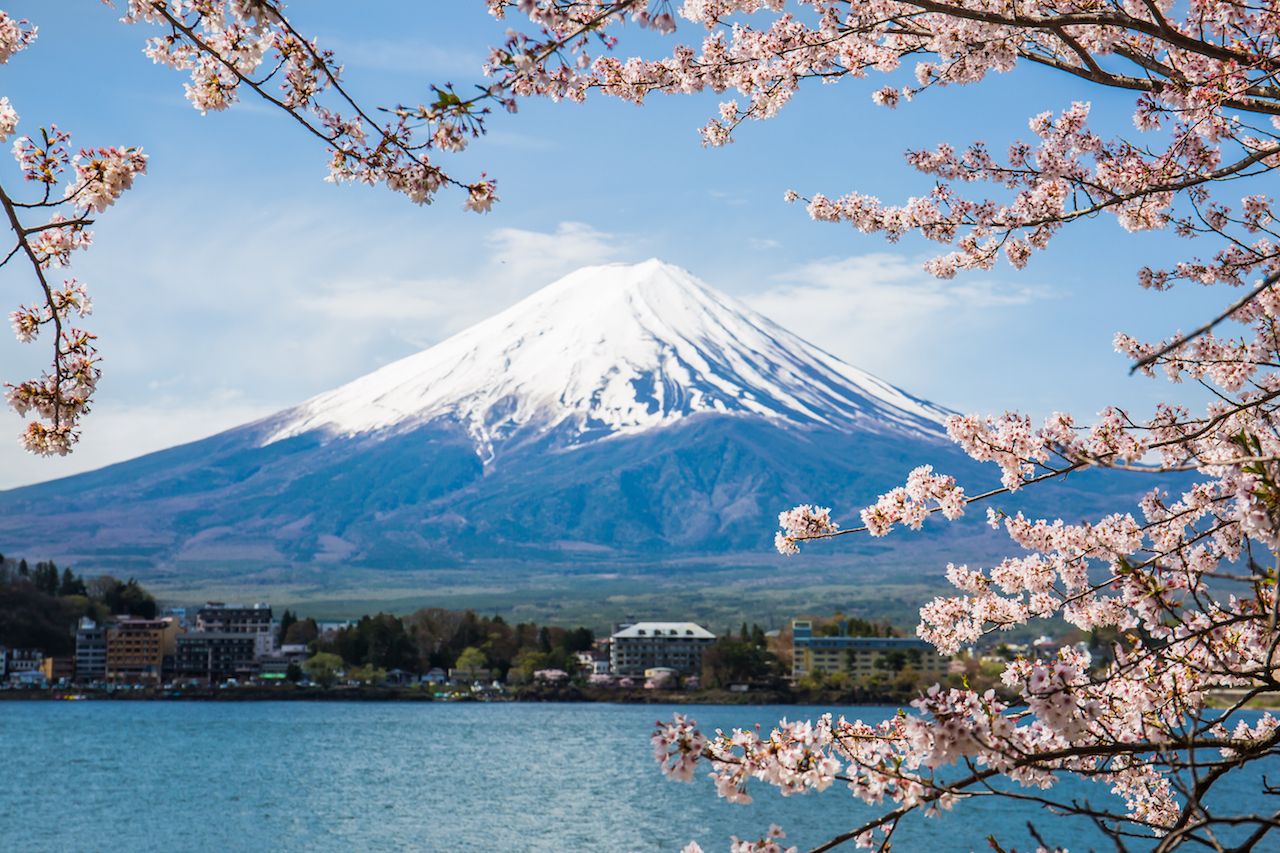
Photo: Aeypix/Shutterstock
Lake Kawaguchiko makes up part of the Fuji Five Lakes region; the others are Lake Yamanakako, Lake Saiko, Lake Shojiko, and Lake Motosuko. While Lake Yamanakako is the closest lake to the base of Mount Fuji, the view from there is more likely to be obscured by clouds. Kawaguchiko is the second largest of the five lakes and is also the most developed area. The lake’s eastern shore has a bustling onsen (hot spring) town. All the tourists that visit mean there are several bus and train routes that make it easily accessible.
It’s the northern shore, however, that provides the best views of Fuji. You can view it on foot, or you could hop on a cruise that takes you around the entire lake. A handful of companies, like the Lake Kawaguchiko Pleasure Boat, offer tours on the water. Once you arrive in the main part of town, several signs indicate where to book a boat tour — so you don’t need to reserve in advance. Visit during the cherry-blossom season, so you can get two beautiful sights for the price of one. The combination of Lake Kawaguchiko’s serene waters, Mount Fuji, and the cherry blossoms produce a perfectly idyllic scene.
Arakura Sengen Park

Photo: Shuttertong/Shutterstock
One of the most famous views of Fuji has a red pagoda in the foreground. You’ll see it on advertisements to visit Japan, magnets, postcards, and the like. The view is actually of the Chureito Pagoda, part of the Arakura Sengen Shrine in Arakura Sengen Park. The entire shrine is built on and around a mountain, and the pagoda, built in 1963 as a peace memorial, is almost 400 steps up that mountain.
Hiking your way to the top may prove challenging if you’re not used to the incline, but it’s commonplace to stop for a breath along the way — so no one will judge if you need a moment. Visit during the spring when the cherry blossoms are in bloom or in autumn when the leaves take on a bright crimson hue. If you’re willing to put in the effort, you’ll be rewarded with amazing vistas.
Hakone
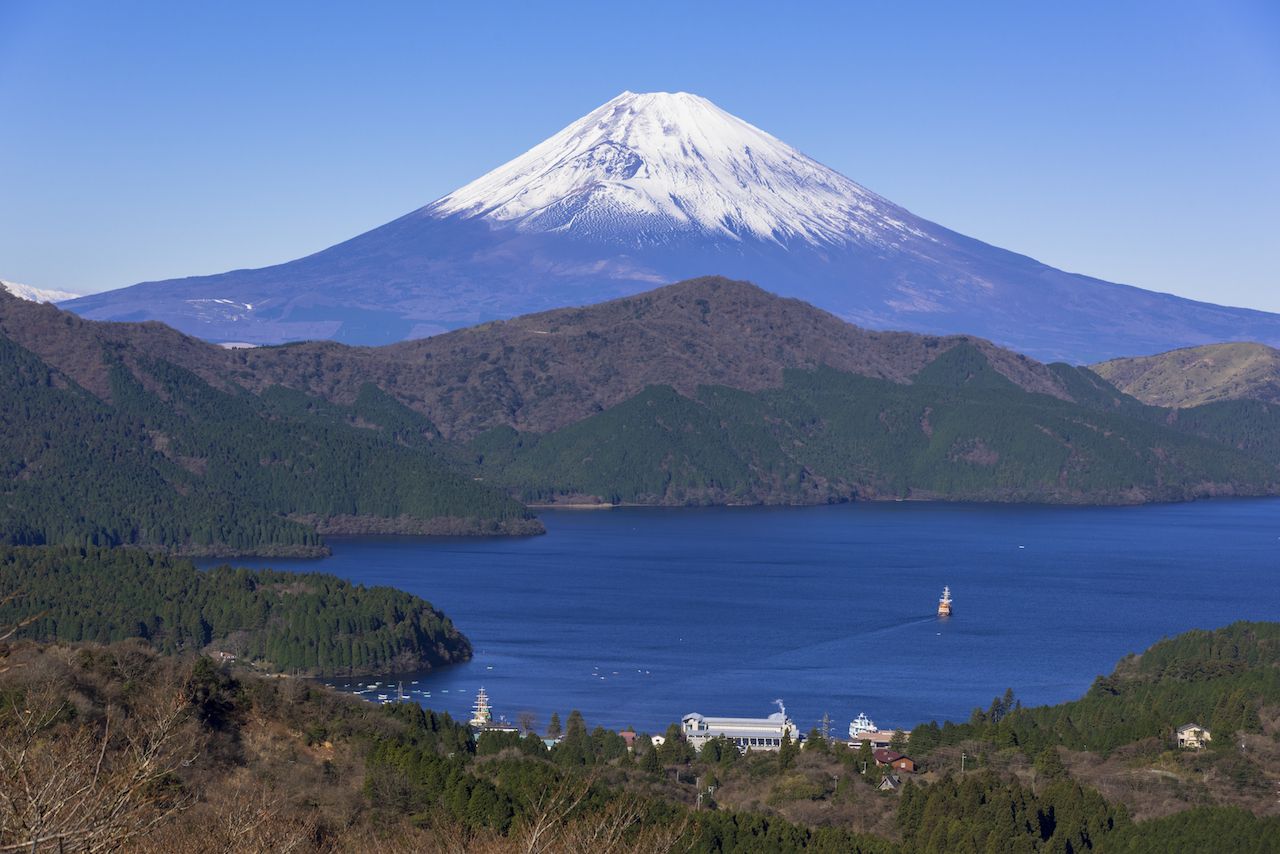
Photo: San Hoyano/Shutterstock
Hakone is one of Japan’s many mountain towns, located in the Kanagawa Prefecture and part of the Fuji-Hakone-Izu National Park. It’s a hiker’s paradise, with an abundance of trails through the forested wilderness. Its proximity to Tokyo makes it an easy day or overnight trip for people seeking a bit of nature.
Mount Kintoki is one of the more popular hiking spots in Hakone, and part of the reason is the stunning panoramic views of Mount Fuji visible from its summit. Several trails with varying difficulty reach the top, but an easier route would be starting from the Kintoki Shrine and climbing up Otome Pass. In addition to Fuji, you can gaze at the Hakone Valley, Lake Ashi, Yadori-ishi Rock, and the Owakudani area from Kintoki.
Kamakura
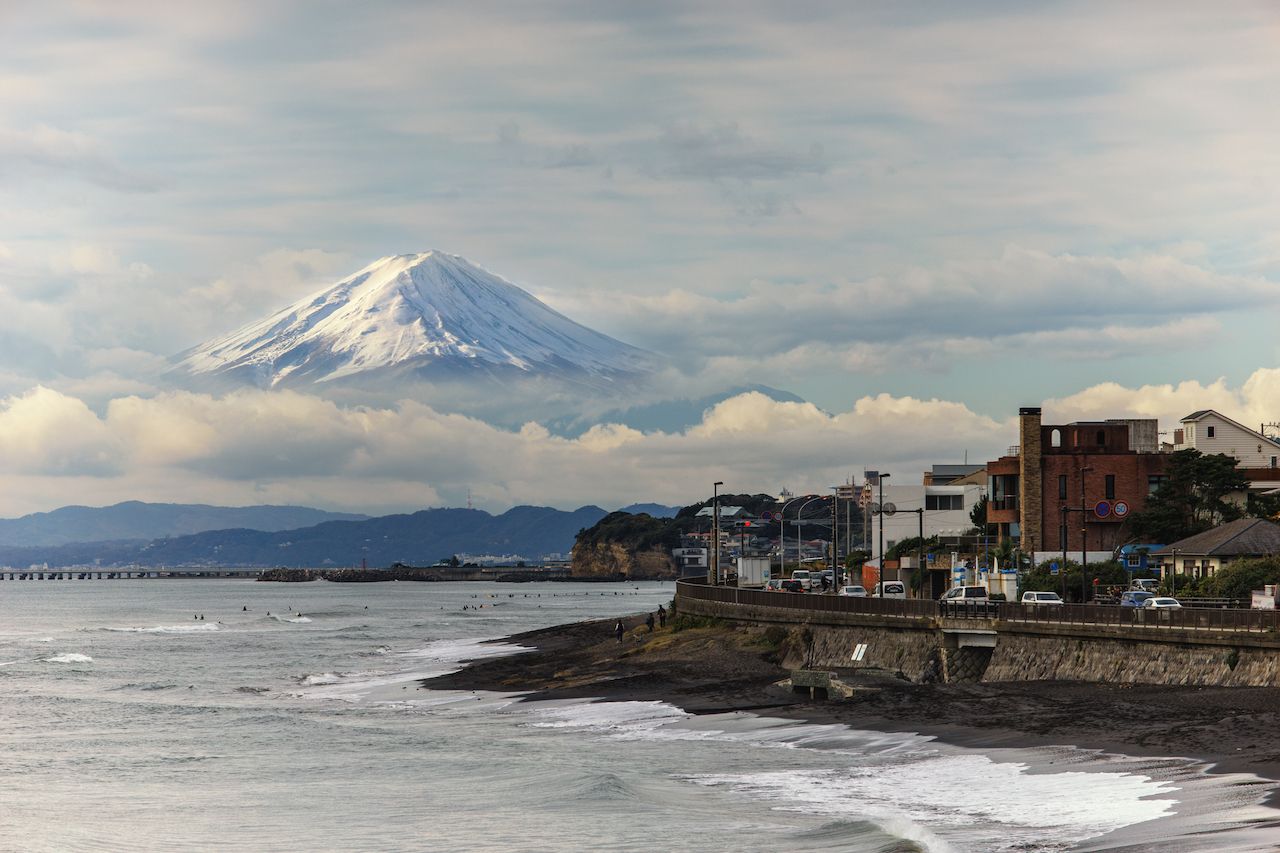
Photo: yougoigo/Shutterstock
Kamakura, a town right between the waters of Sagami and Tokyo Bay, is a favorite spot for those looking for a good place to surf. It’s well known for its bronze Great Buddha statue at Kotokuin Temple; at 40 feet, it’s the second tallest bronze Buddha in Japan.
Of Kamakura’s many beaches, Inamuragasaki is a black-sand beach with towering cliffs. It’s not the largest beach in the area that you can visit, but it’s relatively unspoiled. More importantly, the sunset and Fuji views make for an incredible moment.
Fuji-Q Highland

Photo: ICQ34791919/Shutterstock
Fuji-Q is an amusement park located in the city of Fujiyoshida in the Yamanshi Prefecture, right at the base of Mount Fuji. Opened in 1968, it’s now one of the best places to catch sight of Fuji without much interruption from clouds. For those less inclined toward hiking or extensive physical activity who still want to see the awe-inspiring mountain, visiting Fuji-Q is the next best bet. It’s open daily from 8:30 AM to 8:00 PM with extended hours until 9:00 PM or 10:00 PM on some days. Admission to the park itself is free, so you only pay for the rides, which cost 400 to 1800 yen ($3.50-$16) each, or you can get an unlimited day pass for 5700 yen (about $50).
Sure, you could visit Fuji-Q and see Fuji without paying a single cent, but the theme park is home to some of the world’s top roller coasters that have broken Guinness World Records. The “Takabisha” is the steepest roller coaster in the world with a 121-degree angled drop. It’d be a waste not to spend the day screaming your lungs out and seeing the highest mountain in Japan.
Hot Springs
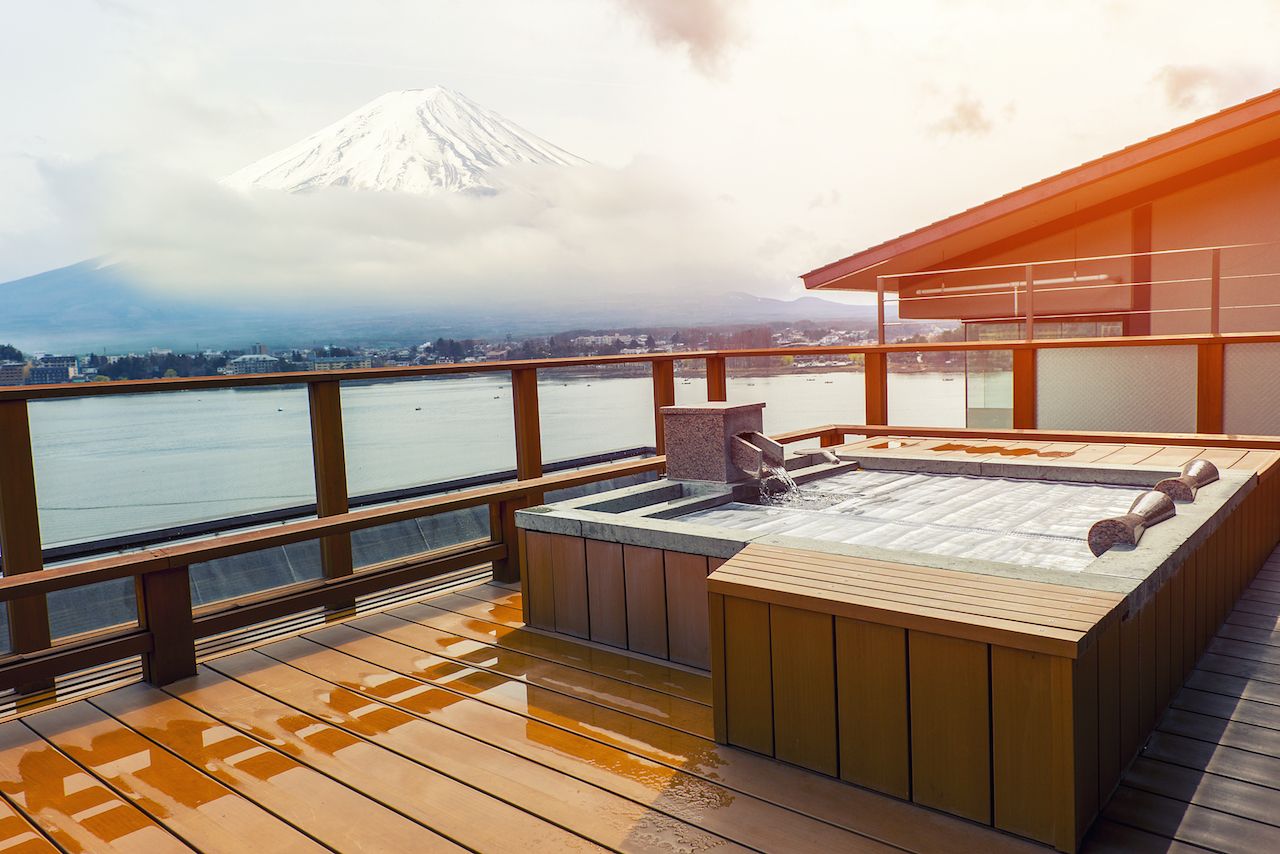
Photo: SAHACHATZ/Shutterstock
Onsens are a big part of Japanese culture. Because the country has so much volcanic activity, you can find an onsen in just about every corner of the Japanese archipelago. Hot springs have healing qualities, such as soothing aches and pains, relieving skin problems, and boosting circulation. The perfect way to end a day spent out and about is by visiting an onsen — to let your body heal itself after hours of exertion.
But why not enhance that experience by having Mount Fuji as your backdrop while you soak? Many onsens in the area offer clear, majestic views of Fuji, like the popular Fujiyama Onsen, Hotel Mifujien, and Benifuji No Yu. At some places, admission prices vary by time of day and range from 600 to 1700 yen ($5.40 to $15). But you can’t really put a price on your health or that magical Mount Fuji view.